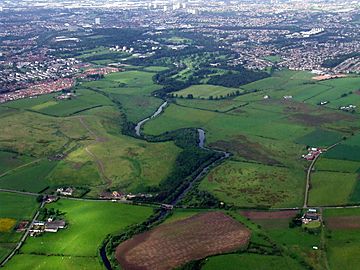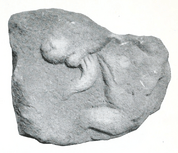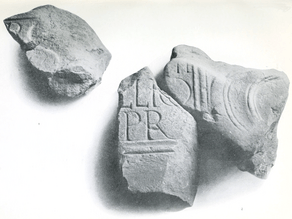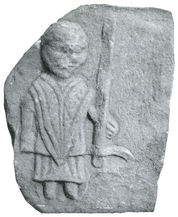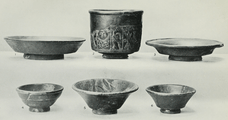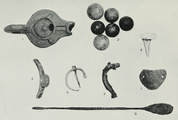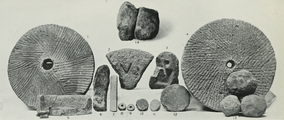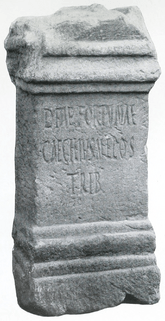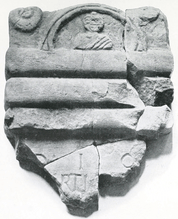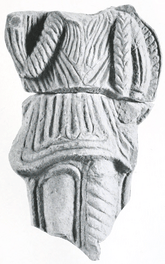Balmuildy facts for kids
Quick facts for kids Balmuildy |
|
|---|---|
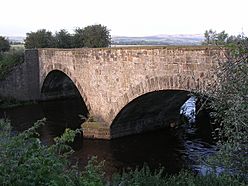
Balmuildy Bridge, modern road bridge near the Glaswegian section of the Antonine Wall
|
|
| Place in the Roman world | |
| Province | Britannia |
| Structure | |
| — Stone structure — | |
| Location | |
| Town | Glasgow |
| Country | |
| Site notes | |
| Condition | Ruined |
Balmuildy is where a Roman fort once stood on the Antonine Wall in Scotland. It's special because it's one of only two forts on the Antonine Wall that had stone walls. The other one is Castlecary. Today, you can see a digital picture of what the fort might have looked like.
Where is Balmuildy?
The fort is in Glasgow, a city in Scotland. It's located west of Bishopbriggs and east of Bearsden. The fort was built just south of the River Kelvin and north of the Forth and Clyde Canal. This area is part of Glasgow City Council's land.
Balmuildy had other forts nearby. To its west was Bearsden, and to its east was Cadder. There were also smaller forts, called fortlets, between them. These were at Summerston to the west and Wilderness Plantation to the east.
Why Was Balmuildy Built?
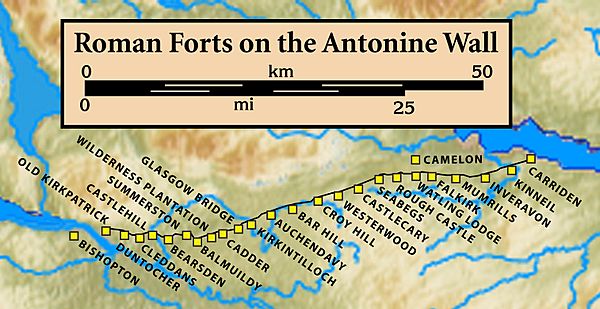
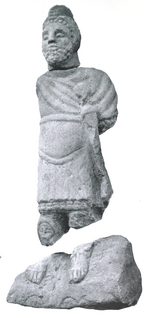
The Balmuildy fort was built by the Romans between 142 and 154 AD. This was ordered by the Roman Emperor Antoninus Pius. The governor of Roman Britain at the time, Quintus Lollius Urbicus, helped to manage the building work.
Balmuildy was one of sixteen forts that supported the Antonine Wall. The wall was a big barrier built by the Romans to protect their land. Small fortlets were placed between the main forts. A special road, called the Military Way, connected all these sites. This helped Roman soldiers move around easily.
Emperor Antoninus Pius never actually visited Britain. His reason for building the wall so far north was likely to push back against groups like the Caledonians. These groups were causing trouble for the Roman Empire.
The Antonine Wall, including Balmuildy, was used for only about eight years. After that, the Roman soldiers moved back to Hadrian's Wall, which was further south.
Later, in 208 AD, another emperor named Septimius Severus sent soldiers back to the wall. He ordered repairs, which is why it's sometimes called the Severan Wall. However, the Romans left the wall for good a few years later.
Most Roman forts along the wall held about 500 soldiers. Some larger forts, like Castlecary, could hold around 1,000 soldiers. These larger forts likely had women and children living nearby too, even though soldiers were not allowed to marry. It's thought that many civilians lived around Balmuildy.
What Was Found at Balmuildy?
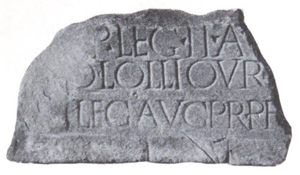
Archaeologists have dug at the Balmuildy site. Steuart Napier Miller wrote about his findings in 1922. Sir George Macdonald also described the site in 1934.
Many interesting items have been found at Balmuildy:
- An altar (a type of stone table for offerings) dedicated to Fortuna, the Roman goddess of luck. This was found in one of the fort's bath houses.
- Another altar dedicated to Mars, the Roman god of war. Several statues were found with it.
- A stone with a dedication from the Second Legion. This stone had been reused by farmers for other purposes.
- More pieces of stone from the same legion were also discovered.
- All these finds are now kept at the Hunterian Museum in Glasgow.
Other cool discoveries include:
- A door hinge plate.
- A terracotta drainpipe from a bath house.
- A holdfast, which was used to stick tiles to the bath house wall.
- A perfume pot and an unguent pot (for ointments or oils).
- A Samian ware platter (a type of fancy Roman pottery).
- A clay cheese press.
- An oil lamp.
- A surgical probe, which was a medical tool.


